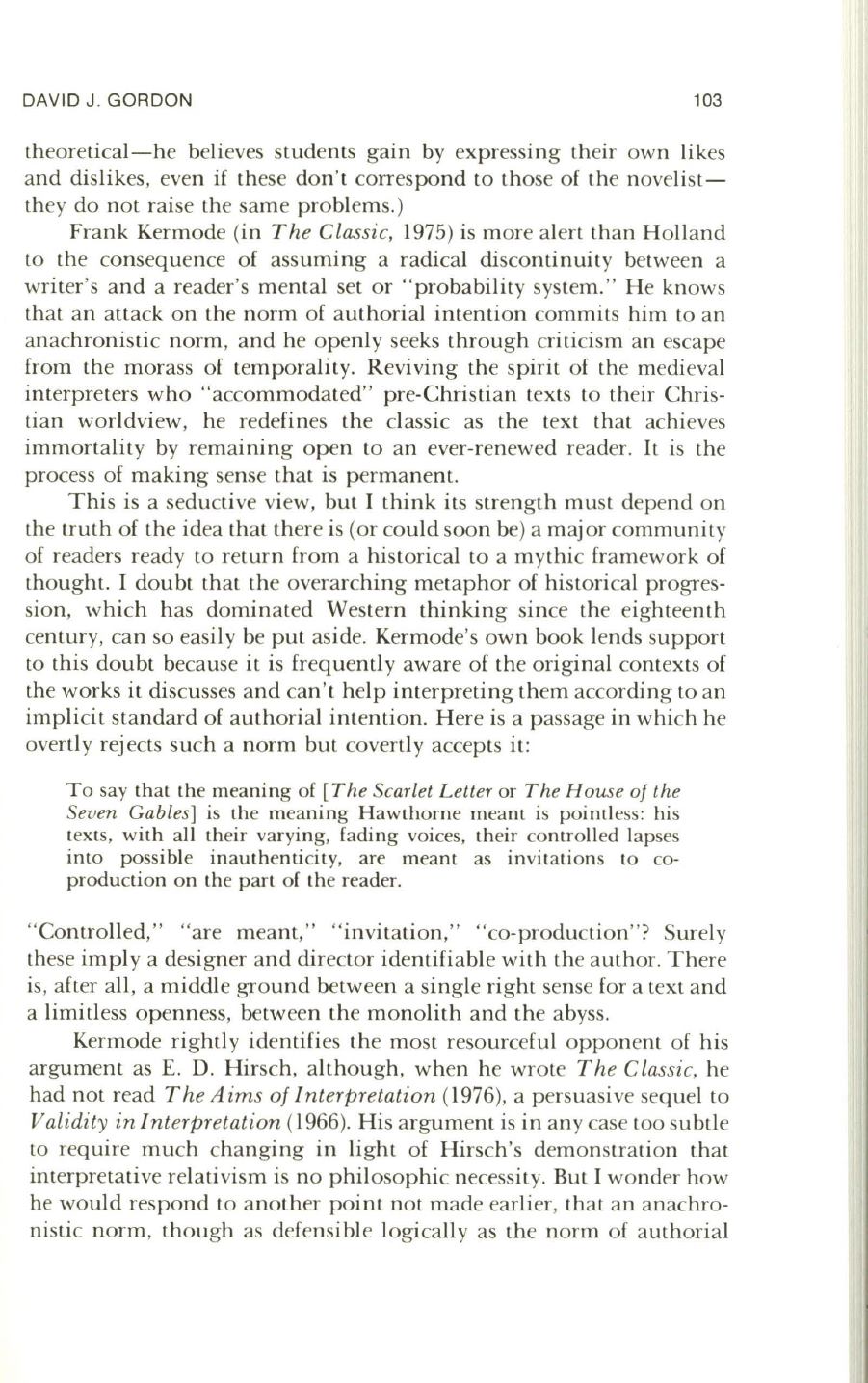
DAVID J. GORDON
103
theoretical-he believes students gain by expressing their own likes
and dislikes, even if these don't correspond to those of the novelist–
they do not raise the same problems.)
Frank Kermode (in
The Classic,
1975) is more alert than Holland
to the consequence of assuming a radical discontinuity between a
writer's and a reader's mental set or "probability system." He knows
that an attack on the norm of authorial intention commits him to an
anachronistic norm, and he openly seeks through criticism an escape
from the morass of temporality. Reviving the spirit of the medieval
interpreters who "accommodated" pre-Christian texts to their Chris–
tian worldview, he redefines the classic as the text that achieves
immortality by remaining open to an ever-renewed reader. It is the
process of making sense that is permanent.
This is a seductive view, but I think its strength must depend on
the truth of the idea that there is (or could soon be) a major community
of readers ready to return from a historical to a mythic framework of
thought. I doubt that the overarching metaphor of historical progres–
sion, which has dominated Western thinking since the eighteenth
century, can so easily be put aside. Kermode's own book lends support
to
this doubt because it is frequently aware of the original contexts of
the works it discusses and can't help interpreting them according to an
implicit standard of authorial intention. Here is a passage in which he
overtly rejects such a norm but covertly accepts it:
To say that the meaning of
[The Scarlet Letter
or
The House of the
Seven Gables]
is the meaning Hawthorne meant is pointless: his
texts, with all their varying, fading voices, their controlled lapses
into possible inauthenticity, are meant as invitations to co–
production on the part of the reader.
"Controlled," "are meant," "invitation," "co-production"? Surely
these imply a designer and director identifiable with the author. There
is, after all, a middle ground between a single right sense for a text and
a limitless openness, between the monolith and the abyss.
Kermode rightly identifies the most resourceful opponent of his
argument as E. D. Hirsch, although, when he wrote
The Classic,
he
had not read
The Aims of Interpretation
(1976), a persuasive sequel to
Validity in Interpretation
(1966). His argument is in any case too subtle
to
require much changing in light of Hirsch's demonstration that
interpretative relativism is no philosophic necessity. But I wonder how
he would respond to another point not made earlier, that an anachro–
nistic norm, though as defensible logically as the norm of authorial


